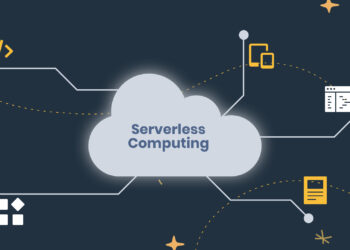In an era marked by the exponential growth of data generated by billions of connected devices – from industrial sensors and autonomous vehicles to smart city infrastructure and personal wearables – traditional centralized cloud computing architectures are facing increasing strain. The sheer volume of data, coupled with the growing demand for real-time insights and ultra-low latency, is driving a fundamental shift in how we process information: the explosive growth of edge processing. Edge processing, or edge computing, involves bringing computation and data storage closer to the source of data generation – “at the edge” of the network.
Instead of sending massive datasets all the way to centralized cloud servers for processing, edge computing performs analysis and decision-making locally, on or near the devices themselves. This paradigm shift is not merely an incremental improvement; it’s a transformative approach that addresses critical limitations of centralized models, unlocking a new wave of innovation and efficiency across numerous industries. This article will delve into the key factors fueling the global explosion of edge processing, explore its diverse architectures and applications, detail its profound benefits, address the inherent challenges in its widespread deployment, and envision its pivotal role in shaping the future of data handling and intelligent systems worldwide, even considering the local context of Semanu, Special Region of Yogyakarta, Indonesia, where specific applications might emerge.
The Driving Forces Behind the Global Edge Processing Explosion

Several converging trends and critical needs are fueling the rapid and global expansion of edge processing capabilities.
Explosion of Data Volume (Data Deluge)
The sheer amount of data being generated by IoT devices, industrial equipment, and various sensors is overwhelming the capacity of networks and centralized cloud infrastructure. Processing this data at the edge reduces the bandwidth required for transmission and the storage demands on central servers.
Demand for Low Latency
Many applications, such as autonomous driving, industrial robotics, augmented reality (AR), and virtual reality (VR), require near real-time responses. The round-trip latency of sending data to the cloud and back is often unacceptable for these time-sensitive use cases. Edge processing minimizes this latency by performing computations locally.
Bandwidth Constraints and Cost
Transmitting vast amounts of data to the cloud can be expensive and challenging, especially in areas with limited or unreliable network connectivity. Edge processing reduces the reliance on high-bandwidth connections, lowering transmission costs and improving performance in constrained environments. This is particularly relevant in regions like Semanu where internet infrastructure might be developing.
Need for Real-time Insights and Action
In many scenarios, immediate analysis and decision-making based on local data are critical. For example, a defect detected by an industrial sensor needs immediate action to prevent production downtime. Edge processing enables this real-time responsiveness.
Enhanced Security and Privacy
Processing sensitive data locally at the edge can reduce the risk of data breaches during transmission to and from the cloud. It also helps organizations comply with data sovereignty regulations that require data to be processed and stored within specific geographical boundaries. This is increasingly important for user data and industrial secrets.
Offline Operation and Resilience
Edge devices can often continue to operate and make decisions even when disconnected from the central cloud. This is crucial for applications in remote locations or where network connectivity is unreliable. Imagine agricultural sensors in rural Semanu continuing to monitor conditions even during internet outages.
Cost Optimization of Cloud Resources
By offloading processing tasks to the edge, organizations can reduce the computational load on their central cloud infrastructure, leading to lower cloud computing costs.
Enabling New Applications and Services
Edge processing unlocks possibilities for innovative applications and services that were previously infeasible due to latency, bandwidth, or reliability limitations. This can range from personalized AR experiences to more efficient smart city management in urban centers globally, and potentially localized solutions for agricultural optimization in Semanu.
Diverse Architectures and Deployment Models of Edge Processing
Edge processing encompasses a variety of architectural patterns and deployment scenarios, tailored to specific needs and environments.
- Device-Level Processing: Computation occurs directly on the end device itself, such as a smartphone, a smart camera, or an industrial sensor. These devices have embedded processing power capable of running algorithms locally.
- Gateway-Level Processing: Data from multiple edge devices is aggregated and processed by a local gateway device before being potentially sent to the cloud. Gateways can provide more significant processing power and connectivity options than individual sensors.
- On-Premise Edge Servers: Organizations deploy dedicated servers or micro data centers at their local facilities (e.g., factories, retail stores, hospitals) to process data from nearby devices. This provides more substantial compute resources closer to the data source.
- Far Edge/Network Edge: Processing occurs within the telecommunications network infrastructure, closer to the users and devices, such as in cellular base stations or network aggregation points. This is often leveraged by telecom operators to offer edge computing services.
- Mobile Edge Computing (MEC): A specific type of far edge computing that brings computation and storage capabilities to the edge of mobile networks, enabling ultra-low latency for mobile applications.
- Distributed Edge: Workloads are distributed across a large number of geographically dispersed edge nodes, often managed by a cloud provider, offering scalability and low latency across a wide area. This could be relevant for content delivery or large-scale IoT deployments.
Key Applications Driving the Global Surge in Edge Processing
The explosive growth of edge processing is fueled by its transformative potential across a wide range of industries and applications worldwide, with potential localized impacts even in areas like Semanu.
- Industrial IoT (IIoT): Real-time monitoring and control of industrial equipment, predictive maintenance, quality inspection using AI at the edge, and robotics with low-latency control. Imagine sensors in local agricultural processing facilities in Semanu using edge processing for immediate quality checks.
- Autonomous Vehicles: Processing sensor data (lidar, radar, cameras) in real-time for navigation, object detection, and decision-making, requiring ultra-low latency for safety-critical functions.
- Smart Cities: Intelligent traffic management, smart lighting, environmental monitoring, public safety applications (e.g., real-time video analytics), and connected infrastructure. Edge processing can enable localized and faster responses within city sectors.
- Healthcare: Remote patient monitoring with real-time analysis of vital signs, AI-assisted diagnostics at point-of-care devices, and telemedicine applications requiring low latency for interactive consultations.
- Retail: Personalized shopping experiences using edge-based analytics of in-store behavior, inventory management with real-time tracking, and augmented reality applications for product visualization.
- Gaming and Entertainment: Cloud gaming with reduced latency, immersive AR/VR experiences with local rendering and processing, and interactive entertainment systems.
- Agriculture (Smart Farming): Real-time monitoring of soil conditions, weather patterns, and crop health using sensors and drones, enabling automated irrigation, fertilization, and pest control. Edge processing can provide immediate insights to farmers in regions like Semanu for optimizing their yields.
- Telecommunications: Enhanced mobile network performance, low-latency services through MEC, and optimized network resource allocation based on real-time traffic analysis at the edge.
- Logistics and Transportation: Real-time tracking of goods, predictive maintenance of vehicles, and optimized routing based on dynamic conditions.
- Security and Surveillance: Real-time video analytics for threat detection, facial recognition at access points, and intelligent surveillance systems with local processing capabilities.
The Profound Benefits Unleashed by Edge Processing
The global embrace of edge processing is driven by the significant advantages it offers over traditional centralized cloud models.
- Significantly Reduced Latency: Performing computation closer to the data source minimizes network delays, enabling real-time responsiveness for critical applications. This is paramount for applications like autonomous driving and industrial control.
- Lower Bandwidth Consumption and Costs: Processing data locally reduces the amount of data that needs to be transmitted to the cloud, leading to lower bandwidth usage and associated costs. This is particularly beneficial in areas with expensive or limited internet access, such as rural parts of Indonesia including potentially Semanu.
- Enhanced Reliability and Resilience: Edge devices can often continue to operate even if the connection to the central cloud is temporarily lost, ensuring business continuity and operational resilience in remote or challenging environments.
- Improved Security and Privacy: Processing sensitive data locally can reduce the attack surface and help comply with data privacy regulations by keeping data within a defined geographical area.
- Real-time Insights and Faster Decision-Making: Edge processing enables immediate analysis of local data, allowing for quicker decision-making and faster responses to changing conditions, crucial for industrial automation and safety systems.
- Scalability of Data Generation: Edge processing can handle the massive influx of data from a growing number of connected devices without overwhelming central cloud infrastructure.
- Optimized Cloud Resource Utilization: By offloading processing tasks to the edge, organizations can reduce the computational burden and storage requirements on their cloud infrastructure, leading to more efficient use of cloud resources and lower costs.
- Enablement of New and Innovative Applications: The capabilities unlocked by low latency, real-time processing, and localized intelligence at the edge are paving the way for entirely new applications and services that were previously not feasible. This could spur local innovation even in areas like Semanu by enabling smart agriculture solutions tailored to the region’s specific needs.
Key Challenges and Considerations for Global Edge Processing Deployment
Despite its immense potential, the widespread deployment of edge processing globally presents several significant challenges and considerations.
- Managing a Distributed Infrastructure: Deploying and managing a large number of geographically dispersed edge devices and servers can be complex and require robust management platforms and remote monitoring capabilities.
- Security at the Edge: Securing a multitude of edge devices, which may have limited processing power and be physically accessible, poses a significant security challenge. Robust device authentication, encryption, and vulnerability management are crucial.
- Connectivity Issues and Intermittency: While edge processing aims to reduce reliance on constant connectivity, managing devices in areas with unreliable network access requires solutions for data synchronization and offline operation. This is a pertinent concern in many developing regions.
- Power Management: Many edge devices are battery-powered or operate in environments with limited access to reliable power sources. Energy efficiency and optimized power consumption are critical design considerations.
- Data Synchronization and Consistency: Ensuring data consistency between edge devices and the central cloud, especially in scenarios with intermittent connectivity, requires careful synchronization mechanisms.
- Software Deployment and Updates: Remotely deploying and updating software and firmware on a large fleet of diverse edge devices can be logistically challenging.
- Skills Gap and Expertise: Deploying and managing edge computing solutions requires specialized skills in areas like embedded systems, IoT, networking, and distributed computing.
- Interoperability and Standardization: The lack of universal standards and interoperability between different edge devices, platforms, and cloud providers can create integration complexities.
- Cost of Edge Hardware and Deployment: While edge processing can optimize cloud costs, the initial investment in edge hardware and the costs associated with deployment and maintenance need careful consideration.
- Data Governance and Compliance: Managing data generated and processed at the edge, ensuring compliance with various data privacy regulations across different geographical locations, adds complexity to data governance strategies.
The Future of Edge Processing as a Core Pillar

The global trajectory of edge processing indicates its evolution from a promising trend to a fundamental pillar of future data handling and intelligent systems worldwide, with localized adaptations and innovations emerging in diverse regions like Semanu.
- Hybrid Edge-Cloud Architectures: The future will likely see a prevalence of hybrid architectures where edge processing handles real-time, latency-sensitive tasks, while the cloud manages large-scale data storage, complex analytics, and global model training.
- AI at the Edge (TinyML): Advancements in TinyML (Tiny Machine Learning) will enable more sophisticated AI models to run directly on resource-constrained edge devices, enabling truly intelligent and autonomous edge systems.
- Serverless on the Edge: The serverless computing paradigm will extend to the edge, allowing developers to deploy and manage edge applications with the same agility and scalability benefits as cloud-based serverless functions.
- Fog Computing Evolution: The concept of fog computing, which involves processing data at various levels between the edge and the cloud, will become more refined and integrated into comprehensive edge strategies.
- Edge-to-Cloud Security Frameworks: Robust and standardized security frameworks will emerge to address the unique security challenges of distributed edge environments.
- Open Standards and Interoperability Initiatives: Increased industry collaboration will drive the development of open standards and protocols to improve interoperability between different edge devices and platforms.
- Edge Marketplaces and Ecosystems: Thriving marketplaces for edge applications, services, and hardware will emerge, fostering innovation and making edge solutions more accessible.
- Edge Computing for 5G and Beyond: The rollout of 5G networks, with their ultra-low latency and high bandwidth, will further accelerate the adoption and capabilities of mobile edge computing.
- Sustainability and Green Edge: Efforts will focus on developing more energy-efficient edge devices and powering edge infrastructure with renewable energy sources to minimize the environmental impact of distributed computing.
- Localized Edge Innovations: Specific needs and challenges in different regions, such as agricultural optimization in Semanu, will drive the development of tailored edge processing solutions that address local contexts and leverage local expertise.
Conclusion
The global explosion of edge processing signifies a fundamental shift towards a more decentralized and intelligent computing paradigm. By bringing computation closer to the source of data, edge computing is overcoming the limitations of traditional centralized models, unlocking unprecedented opportunities for real-time insights, low-latency applications, enhanced security, and efficient resource utilization. While challenges in managing distributed infrastructure, ensuring security at the edge, and maintaining connectivity need to be addressed, the transformative benefits across a multitude of industries are undeniable.
From revolutionizing industrial operations and enabling autonomous vehicles to creating smarter cities and transforming healthcare, edge processing is poised to be a core pillar of our increasingly connected world. As technology continues to advance and the volume of data generated at the edge continues to grow, the global impact of edge processing will only intensify, driving innovation and creating a smarter, more responsive, and more efficient world, with the potential to foster localized solutions and economic opportunities.















